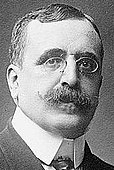| |||||||||||||||||||||||||||||||||||||||||||||||||||||||||||||||||||||||||||||
All 403 seats in the Congress of Deputies and 180 (of 360) seats in the Senate 202 seats needed for a majority in the Congress of Deputies | |||||||||||||||||||||||||||||||||||||||||||||||||||||||||||||||||||||||||||||
|---|---|---|---|---|---|---|---|---|---|---|---|---|---|---|---|---|---|---|---|---|---|---|---|---|---|---|---|---|---|---|---|---|---|---|---|---|---|---|---|---|---|---|---|---|---|---|---|---|---|---|---|---|---|---|---|---|---|---|---|---|---|---|---|---|---|---|---|---|---|---|---|---|---|---|---|---|---|
| |||||||||||||||||||||||||||||||||||||||||||||||||||||||||||||||||||||||||||||
 Election results by Congress of Deputies electoral constituency and district | |||||||||||||||||||||||||||||||||||||||||||||||||||||||||||||||||||||||||||||
| |||||||||||||||||||||||||||||||||||||||||||||||||||||||||||||||||||||||||||||
The 1903 Spanish general election was held on Sunday, 26 April (for the Congress of Deputies) and on Sunday, 10 May 1903 (for the Senate), to elect the 11th Cortes of the Kingdom of Spain in the Restoration period. All 403 seats in the Congress of Deputies were up for election, as well as 180 of 360 seats in the Senate.
Liberal prime minister Práxedes Mateo Sagasta's last period in power was dominated by the rise of Catalan regionalism and a string of worker strikes, as well as a number of issues—such as the religious and the educational questions—in which the government's results were mixed. A deteriorating health condition forced Sagasta's resignation on 6 December 1902, with power being handed over to Francisco Silvela and his Conservative Party; Sagasta would end up dying one month later, on 5 January. As a result, 1903 was the first election in the Restoration period not to be contested either by Sagasta or by Antonio Cánovas del Castillo, both of whom had been the regime's pillars by ensuring its duration and stability for decades. It was also the first election with Alfonso XIII as King regnant, following his coming of age and the end of his mother's regency.
Cite error: There are <ref group=lower-alpha> tags or {{efn}} templates on this page, but the references will not show without a {{reflist|group=lower-alpha}} template or {{notelist}} template (see the help page).





